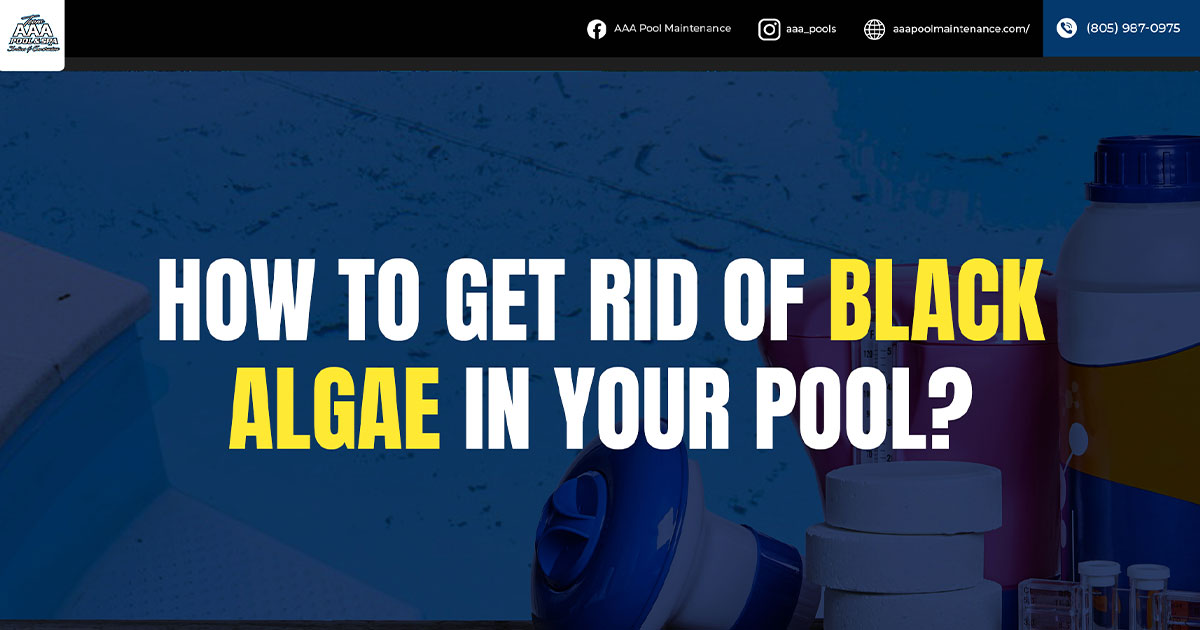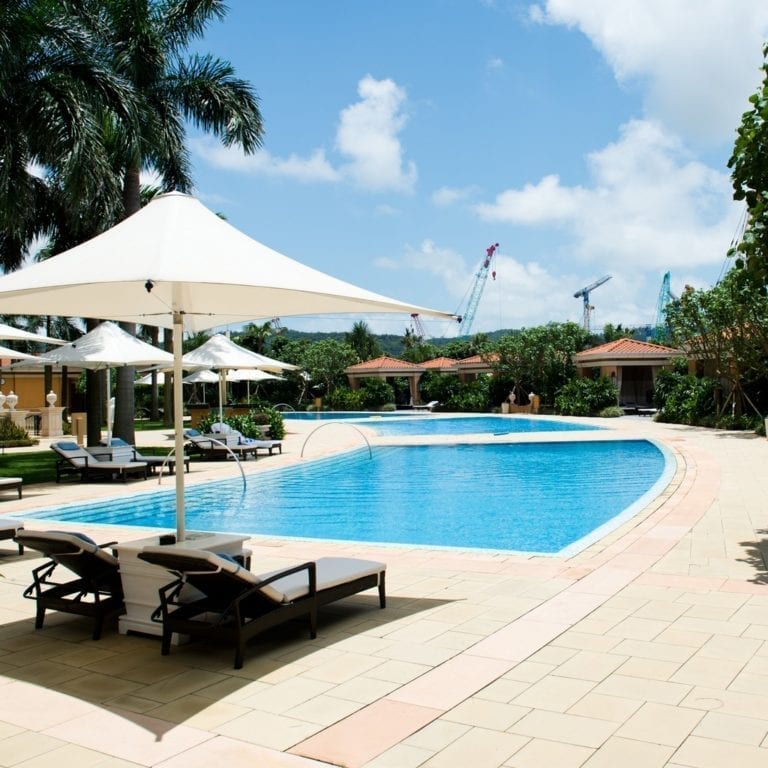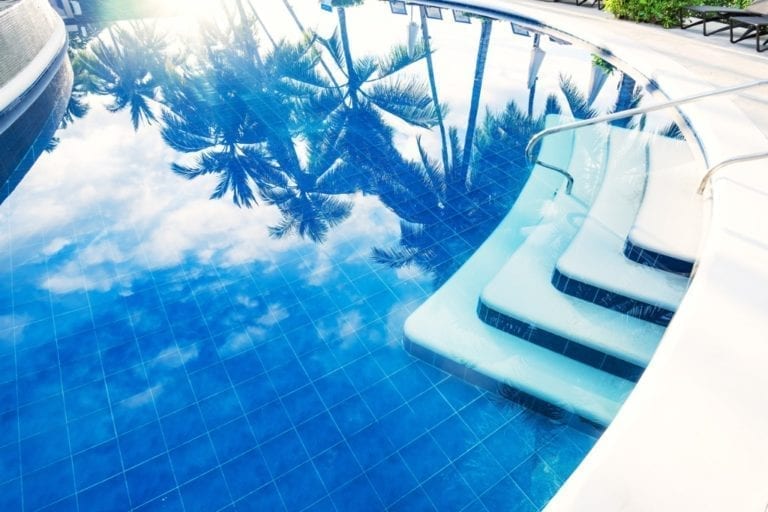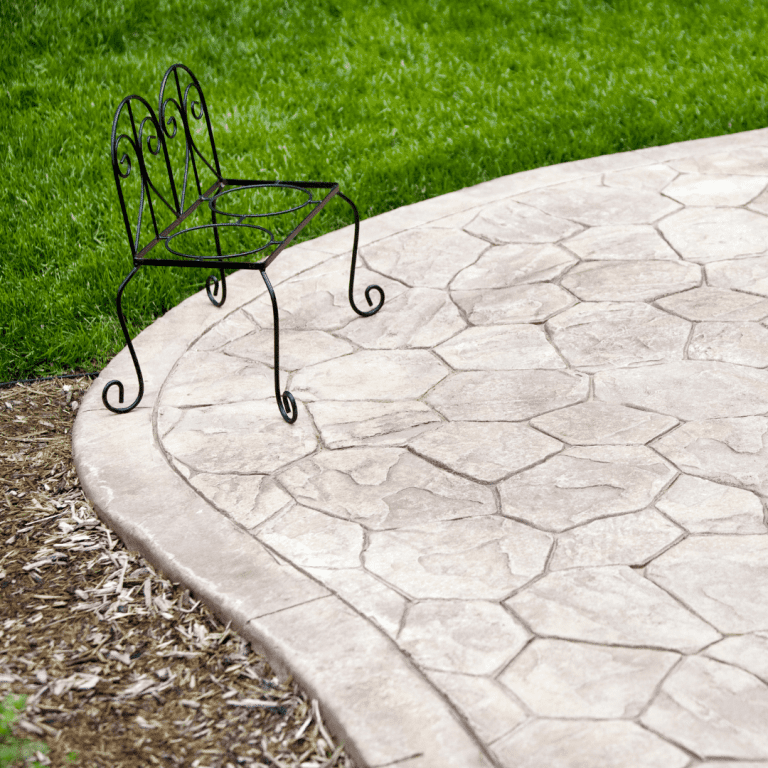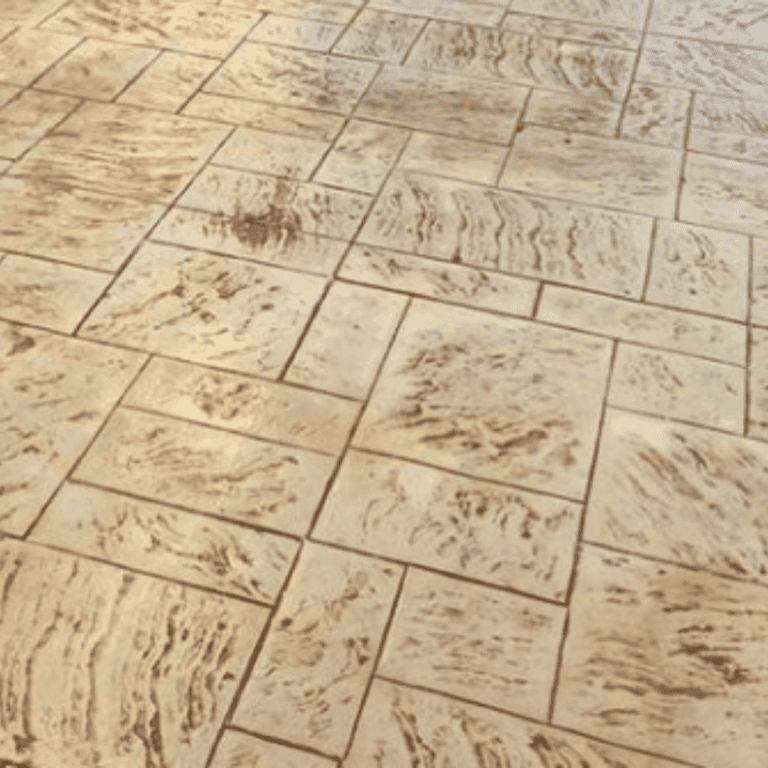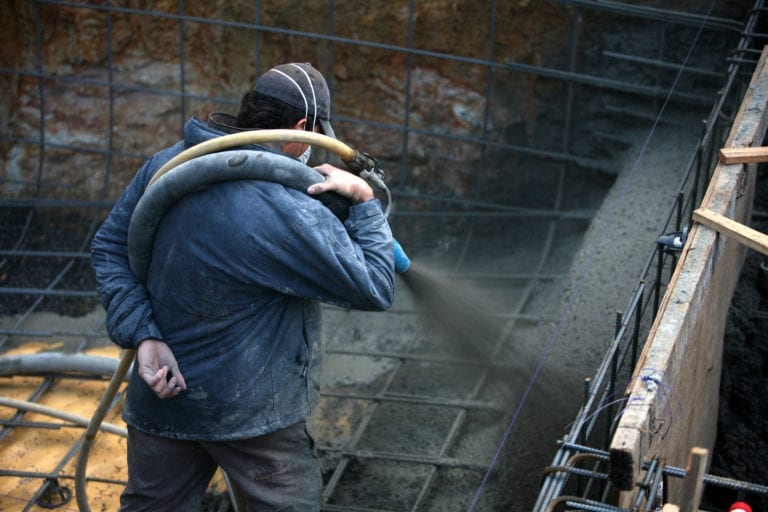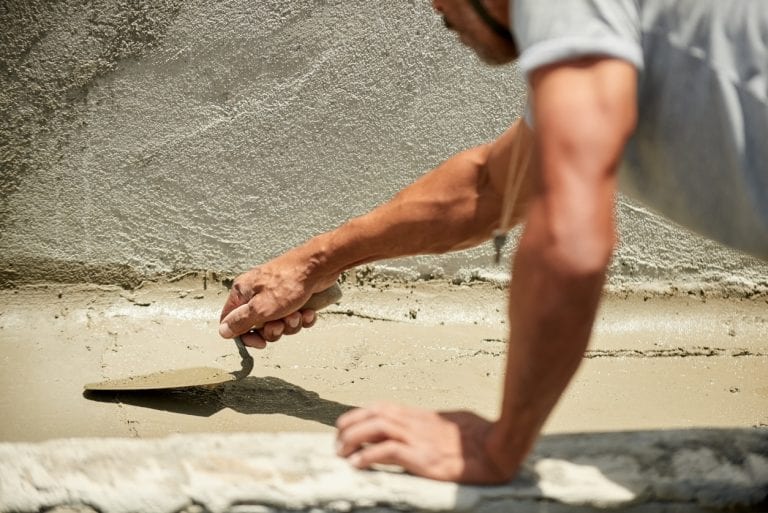Welcome to AAA Pool Maintenance, your trusted experts in pool and spa maintenance, construction, and repairs for over 50 years. If you’re dealing with the stubborn problem of black algae in your pool, you’ve come to the right place. Black algae is a persistent and hard-to-kill bacteria that can pose health risks and ruin the appearance of your pool. In this article, we’ll provide you with effective tips and solutions to eliminate black algae and maintain a clean and healthy pool.
An overhead view of a pool with dark, murky water. The walls and floor of the pool are covered in black, slimy algae. There is no one in the pool and the surrounding area is empty. The water looks uninviting and disgusting.

Key Takeaways:
- Black algae is a persistent bacteria that appears as black spots on pool surfaces.
- Black algae roots deeply into porous pool surfaces, making it difficult to remove.
- Preventing black algae growth requires proper pool water chemistry and using black algae-specific algaecides.
- Black algae can pose health risks due to the cyanotoxins it produces.
- Removing black algae requires a combination of manual scrubbing and chemical treatments.
What is Black Algae, and Where Does it Come From?
Black algae, scientifically known as cyanobacteria, is a persistent and hard-to-kill bacteria that appears as black spots on pool surfaces. Unlike green and yellow algae, black algae has a protective outer layer that makes it resistant to sanitizers. It primarily comes from natural bodies of water and can attach to clothing and pool toys, spreading to your pool.
To better understand black algae and its origins, let’s take a closer look at its characteristics and how it finds its way into your pool. Black algae, also known as cyanobacteria, is a type of bacteria that thrives in porous pool surfaces like pebbles, plaster, and gunite. It roots deeply into these surfaces, making it difficult to remove. The bacteria forms as a pinhead to quarter-sized black spots that are often mistaken for dirt or debris.
Black algae primarily come from natural bodies of water such as lakes, rivers, or oceans. When swimming in these natural environments, the bacteria can adhere to your swimsuits and pool toys, hitching a ride back to your pool. This is why it’s crucial to thoroughly clean your swimsuits and pool toys after swimming in natural bodies of water to prevent the introduction of black algae into your pool.
Once black algae enter your pool, it can quickly spread and become a persistent problem. Its protective outer layer makes it resistant to many sanitizers, making it challenging to eliminate. Understanding the origins of black algae can help you take preventive measures to keep it out of your pool and maintain a clean and healthy swimming environment.
Create an image of black algae in a pool, with tendrils extending from its center to the walls and floor. The algae should appear dark and slimy, with a textured surface that contrasts sharply with the smooth tiles of the pool. Add a sense of menace or danger to the image, highlighting the potential harm that black algae can cause to swimmers and the structural integrity of the pool.
| Characteristic | Black Algae | Green Algae | Yellow Algae |
|---|---|---|---|
| Appearance | Black spots on pool surfaces | Green, slimy patches | Yellow or mustard-colored spots |
| Resistance to sanitizers | Highly resistant | Susceptible to sanitizers | Susceptible to sanitizers |
| Common surfaces | Pebble, plaster, gunite | Any pool surface | Pebble, plaster, gunite |
| Origin | Natural bodies of water | Often introduced through wind, rain, or birds | Often introduced through wind, rain, or birds |
Understanding the differences between black algae and other types of algae can help you identify and address the specific challenges associated with black algae. While green and yellow algae can still be problematic, black algae requires specific treatment and prevention strategies due to its resistant nature.
The Dangers of Black Algae in Your Pool
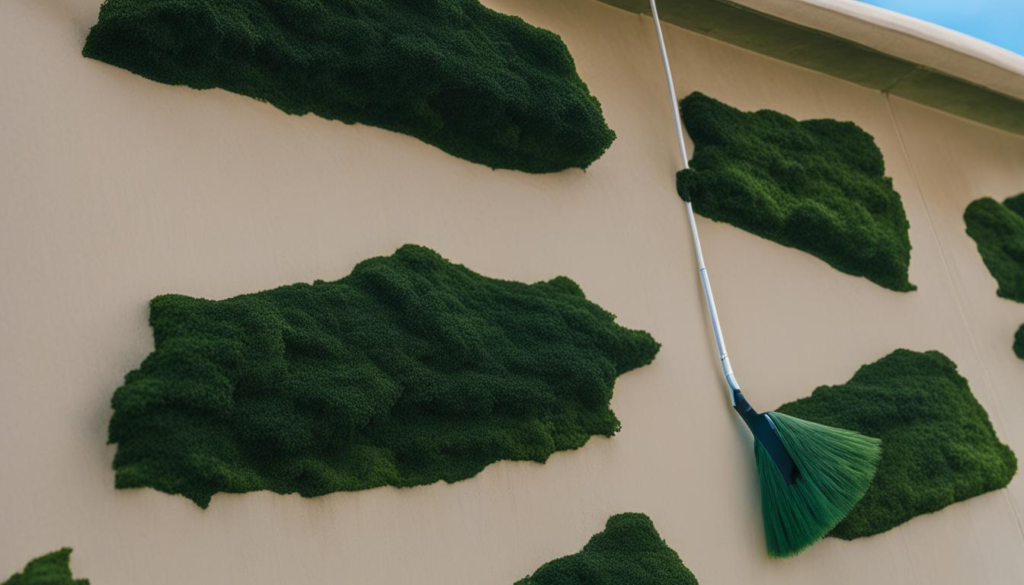
Black algae not only poses an unsightly problem for pool owners but also brings potential health risks. The cyanobacteria responsible for black algae produce cyanotoxins, natural toxins that can contaminate the water. Ingesting water contaminated with black algae can lead to various health issues, including nausea, stomach cramps, and even liver damage. It is crucial to avoid swimming in a pool with black algae to prevent exposure to these harmful toxins.
To ensure the safety of you and your loved ones, it’s essential to address black algae growth promptly. Regular pool maintenance and diligent cleaning can help prevent black algae infestations. Additionally, monitoring and maintaining proper water chemistry, such as pH and chlorine levels, can create an inhospitable environment for black algae to thrive.
AAA Pool Maintenance, with over 50 years of expertise in pool care, offers dedicated services to help you tackle black algae and maintain a healthy pool. Our team of professionals specializes in black algae removal and prevention, utilizing effective algaecides and proven techniques to ensure the complete eradication of black algae from your pool. With our experience and knowledge, we can help you maintain a clean and safe swimming environment for your family and friends.
A close-up of a pool wall covered in black, slimy algae with small patches of green and brown growth. The water should appear murky and discolored, with visible debris and dead leaves floating on the surface. The image should convey a sense of neglect and danger, highlighting the potential health risks associated with swimming in a pool contaminated with black algae.
Don’t let black algae ruin your pool experience. Contact AAA Pool Maintenance today at (805) 987-0975 to schedule a consultation and take the necessary steps towards a black algae-free pool.
How to Kill and Remove Black Algae from Your Pool
A close-up of black algae growth on the wall of a swimming pool. The algae should appear fuzzy and have a dark green or black color. In the background, there should be a pool brush with bristles to scrub away the algae.
Removing black algae from your pool requires a combination of manual scrubbing and chemical treatments. Follow these steps for effective black algae removal:
- Balance pool water chemistry: Test the water and adjust the pH and chlorine levels to the recommended range.
- Shock the pool with chlorine: Use a chlorine shock treatment to kill any bacteria and algae present in the water.
- Thoroughly brush the pool surfaces: Use a pool brush with stiff bristles to scrub the black algae spots and loosen the protective outer layer.
- Apply black algae killer: Use a black algae-specific algaecide and follow the manufacturer’s instructions for dosage and proper application.
- Vacuum the pool: Use a pool vacuum to remove the debris and dead algae from the water.
- Clean the pool filter: Remove and clean the pool filter according to the manufacturer’s instructions to ensure proper filtration.
- Retest and balance water chemistry: Test the water again and adjust the chemical levels as needed to maintain a clean and balanced pool.
By following these steps, you can effectively kill and remove black algae from your pool. However, it’s important to note that black algae can be stubborn and may require multiple treatments for complete eradication. If you are unsure or need assistance, consider contacting a professional pool maintenance service like AAA Pool Maintenance, with over 50 years of expertise in pool and spa maintenance, construction, and repairs in Camarillo and Ventura County. Call Us at (805) 987-0975 to get expert advice and assistance.
Preventing Black Algae Growth in Your Pool
To ensure that your pool remains free from black algae and to avoid the hassle of its stubborn removal process, it is important to implement effective prevention strategies. By following these key steps, you can maintain a clean and healthy swimming environment:
1. Maintain Proper Water Chemistry
Regularly test and balance the water chemistry in your pool. This includes monitoring pH levels, sanitizer levels, and alkalinity. Maintaining the proper balance will create an environment that is less conducive to black algae growth.
2. Wash Swimsuits and Pool Toys
After swimming in natural bodies of water, make sure to thoroughly clean your swimsuits and pool toys. These items can harbor black algae and introduce it to your pool. By keeping them clean, you can prevent the spread of black algae.
3. Use Algaecide
Consider using algaecide as part of your regular pool maintenance routine. Algaecide is specifically designed to prevent the growth of various types of algae, including black algae. It can be an effective tool in keeping your pool free from algae infestations.
4. Consider Professional Pool Services
For thorough and efficient pool maintenance, you may want to consider hiring a professional pool service, such as AAA Pool Maintenance. With over 50 years of expertise in pool and spa maintenance, construction, and repairs, they can provide expert care for your pool. Their team of professionals will ensure that your pool remains clean and free from black algae.
Image:
A crystal clear swimming pool filled with sparkling blue water, surrounded by lush green trees and bushes. In the center of the pool, a circular brush attached to a long pole is being used to scrub the walls and floor of the pool to prevent any black algae growth. A pool skimmer and vacuum are also visible on the side of the pool. The focus is on the clean and well-maintained appearance of the pool, conveying the importance of regular cleaning and upkeep to prevent black algae growth.
| Prevention Tips | Benefits |
|---|---|
| Maintain Proper Water Chemistry | Creates a less conducive environment for black algae growth |
| Wash Swimsuits and Pool Toys | Prevents the spread of black algae from natural bodies of water |
| Use Algaecide | Specifically designed to prevent the growth of black algae |
| Consider Professional Pool Services | Thorough and efficient pool maintenance by experienced professionals |
The Best Pool Cleaning Products for Black Algae
When it comes to effectively treating and removing black algae from your pool, using the right pool cleaning products is essential. Here are some of the top products recommended for combating black algae:
Chlorine
Chlorine is a powerful sanitizing agent that can help kill black algae in your pool. You can use granular chlorine or liquid chlorine to shock the pool and eliminate the algae. Ensure you follow the instructions on the product packaging and maintain proper chlorine levels in your pool.
Algaecide
Using a black algae-specific algaecide is crucial for targeting and killing black algae. Look for an algaecide that is specifically formulated to treat black algae, and follow the instructions on the label. Apply the algaecide directly to the affected areas and brush the pool surfaces thoroughly to remove the algae.
Pool Shock
Pool shock is another effective treatment option for black algae. Shocking the pool with a high dose of chlorine can help kill the algae and prevent its regrowth. Make sure to choose a pool shock product that is suitable for black algae treatment and follow the manufacturer’s instructions for application.
Pool Vacuum
A pool vacuum is an essential tool for removing debris and dead black algae from the pool. After treating the black algae, use a pool vacuum to thoroughly clean the pool surfaces and remove any remaining algae or debris. Regular vacuuming will help maintain a clean and algae-free pool.
| Product | Description |
|---|---|
| Chlorine | A powerful sanitizing agent that kills black algae |
| Algaecide | Specifically formulated to target and kill black algae |
| Pool Shock | A high dose of chlorine to kill black algae |
| Pool Vacuum | Removes debris and dead algae from the pool |
By using the right combination of these pool cleaning products, you can effectively treat and remove black algae from your pool. Remember always to follow the instructions on the product packaging and maintain regular pool maintenance to prevent black algae growth.
DIY Pool Maintenance vs. Hiring a Professional Pool Service
When it comes to pool maintenance, you have two options: doing it yourself (DIY) or hiring a professional pool service. Both have their advantages and considerations, so let’s explore which option may be best for you.
DIY Pool Maintenance
If you enjoy hands-on work and have the time and knowledge to maintain your pool, DIY pool maintenance can be a cost-effective choice. It allows you to have complete control over the process and ensures that you are familiar with every aspect of your pool’s maintenance.
To effectively maintain your pool on your own, you’ll need to invest in the necessary pool cleaning supplies, including pool brushes, chlorine shock, algaecides, a pool vacuum, and pool filter cleaners. It’s crucial to regularly monitor and balance water chemistry, clean the pool surfaces, and maintain proper pool circulation.
Hiring a Professional Pool Service
If you prefer to leave the maintenance to the experts or simply don’t have the time or knowledge to maintain your pool yourself, hiring a professional pool service like AAA Pool Maintenance can be the right choice. With over 50 years of expertise in pool and spa maintenance, construction, and repairs, they have the knowledge and experience to keep your pool in optimal condition.
By hiring a professional pool service, you can save time and ensure that trained professionals maintain your pool. They have access to specialized equipment and chemicals, know how to balance water chemistry effectively, and can spot and address any potential issues before they become major problems.
The Cost of Pool Maintenance
When considering whether to DIY or hire a professional pool service, cost is an important factor. DIY pool maintenance may be more cost-effective in terms of upfront expenses, as you only need to purchase the necessary supplies. However, it’s essential to factor in the value of your time and the potential costs of any mistakes or overlooked maintenance tasks.
Hiring a professional pool service may involve a regular fee, but it can offer peace of mind and potentially save you money in the long run by preventing costly repairs or damage due to improper maintenance.
In the end, the choice between DIY pool maintenance and hiring a professional pool service depends on your preferences, knowledge, and available time. Consider your budget, time commitment, and confidence in maintaining your pool, and make the decision that best suits your needs.
Tips for Maintaining a Healthy Pool
Maintaining a healthy pool ensures a clean and enjoyable swimming experience. By following these pool maintenance tips, you can keep your pool in top shape:
- Regular Cleaning: Regularly clean the pool surfaces and remove debris, such as leaves and twigs, using a pool skimmer or net. This helps prevent the accumulation of organic matter contributing to algae growth.
- Water Chemistry: Test the water regularly using a pool water testing kit to ensure the appropriate balance of chemicals. Maintain proper pH, chlorine, and alkalinity levels to prevent the growth of bacteria and algae. Consult with a pool professional for guidance on maintaining the ideal chemical balance.
- Pool Circulation: Proper pool circulation is crucial for distributing chemicals evenly and preventing stagnant water. Run the pool pump and filter system for a sufficient amount of time each day to ensure proper circulation. Clean or replace pool filters regularly to maintain optimal filtration.
- Pool Cover: When the pool is not in use, cover it with a pool cover to prevent debris from falling into the water. A pool cover also helps retain heat, reduce evaporation, and protect the pool from sunlight exposure.
By following these tips, you can maintain a clean and healthy pool that is safe for swimming. However, if you prefer professional assistance, consider hiring a reputable pool maintenance service like AAA Pool Maintenance. With over 50 years of expertise in pool and spa maintenance, construction, and repairs in Camarillo and Ventura County, they can provide expert care and ensure your pool remains in top condition.
For more information or to schedule a service, call AAA Pool Maintenance at (805) 987-0975.
| Tips for Maintaining a Healthy Pool |
|---|
| Regular Cleaning |
| Water Chemistry |
| Pool Circulation |
| Pool Cover |
Conclusion
In conclusion, maintaining a black algae-free pool requires consistent and proactive pool maintenance. By following the steps for black algae removal and implementing preventive measures, you can ensure a clean and healthy swimming environment. At AAA Pool Maintenance, we have over 50 years of expertise in pool and spa maintenance, construction, and repairs in Camarillo and Ventura County. Contact us at (805) 987-0975 for expert advice and assistance in maintaining your pool.
Remember, regular pool cleaning, proper water chemistry, and thorough pool care are vital in preventing black algae growth. Stay proactive by using appropriate pool cleaning products, testing and balancing water chemistry frequently, and maintaining proper pool circulation and filtration. If you prefer a hassle-free approach, consider hiring our professional pool service to handle all your pool maintenance needs.
With AAA Pool Maintenance’s help and your commitment to pool care, you can enjoy a crystal-clear pool free from black algae. Don’t let black algae take away the pleasure of swimming in your pool. Take action today to maintain a safe and inviting swimming environment for you and your loved ones.

